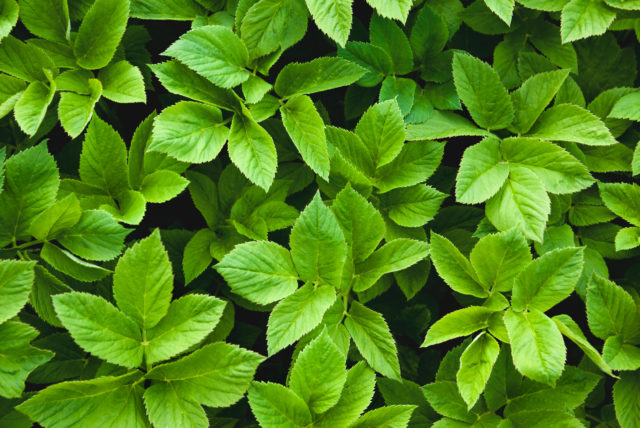Ground elder
In the spring, the lush flowerheads of ground elder rise from the soil around the same time as nettle. Many people find ground elder a real nuisance. However, it is an excellent, mild-tasting plant that can be used in various ways.
The ground elder is common in southern Finland where it grows in gardens, yards and in its original habitats in herb-rich groves. Ground elder is a common sight up to the Oulu region but becomes rarer further north. Due to its long root system, it is a difficult weed to get rid of. According to some sources, the Vikings used to cultivate ground elder. In Central Europe and Russia, it has long been used as a wild vegetable.
The ground elder has trifoliate leaves (meaning leaves divided into three leaflets) and asymmetrical leaflets. The plant forms a dense, carpet-like growth. It blooms later than cow parsley and usually has only a few flower stalks. The blooms are white and umbellate (short stalks spreading from a common point, like an umbrella). If you want to collect ground elder for food, it is important to be sure that you can recognise it as some poisonous plants closely resemble it. For example, the fool’s parsley, hemlock and cowbane are highly poisonous.

In the early spring, the leaves of ground elder are pale green and the leaflets have not yet opened. That is when they are tender and perfect for salads. They are also excellent in soups, stews and pancakes, as well as various pies and flatbread.
Young, soft ground elder leaves can be simply washed and chopped into a salad. When making pies or flatbread, briefly boil the leaves in a small amount of water before use. Boiled, chopped leaves can also be frozen. Young leaves are excellent when dried and made into chlorophyll powder. As the leaves grow, they develop a stronger taste.

The genus’ Latin name Aegopodium comes from the Greek words ’aigos’, goat, and ’podion’, diminutive of foot. The species’ name podagraria refers to the Latin word for gout, ’podagra’. The plant has traditionally been used as gout medicine. In the Middle Ages, ground elder was cultivated in monastery gardens, and in Finland, the plant seems to have been cultivated until the 20th century. Ground elder is also sold commercially as an herb.